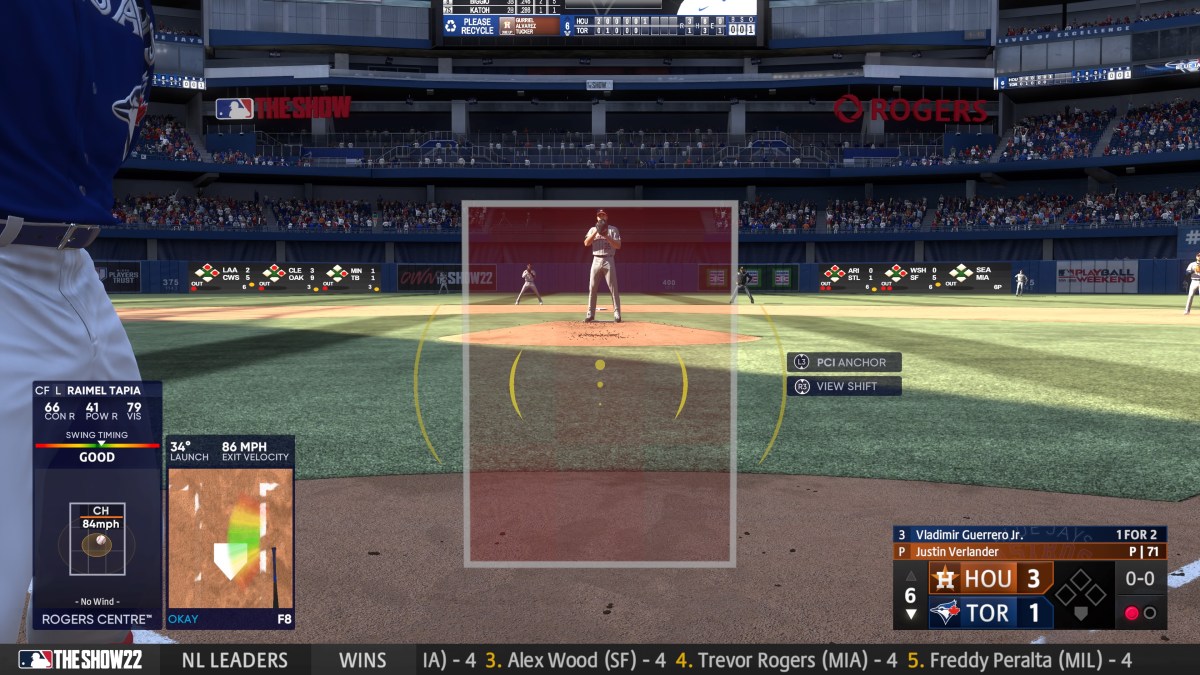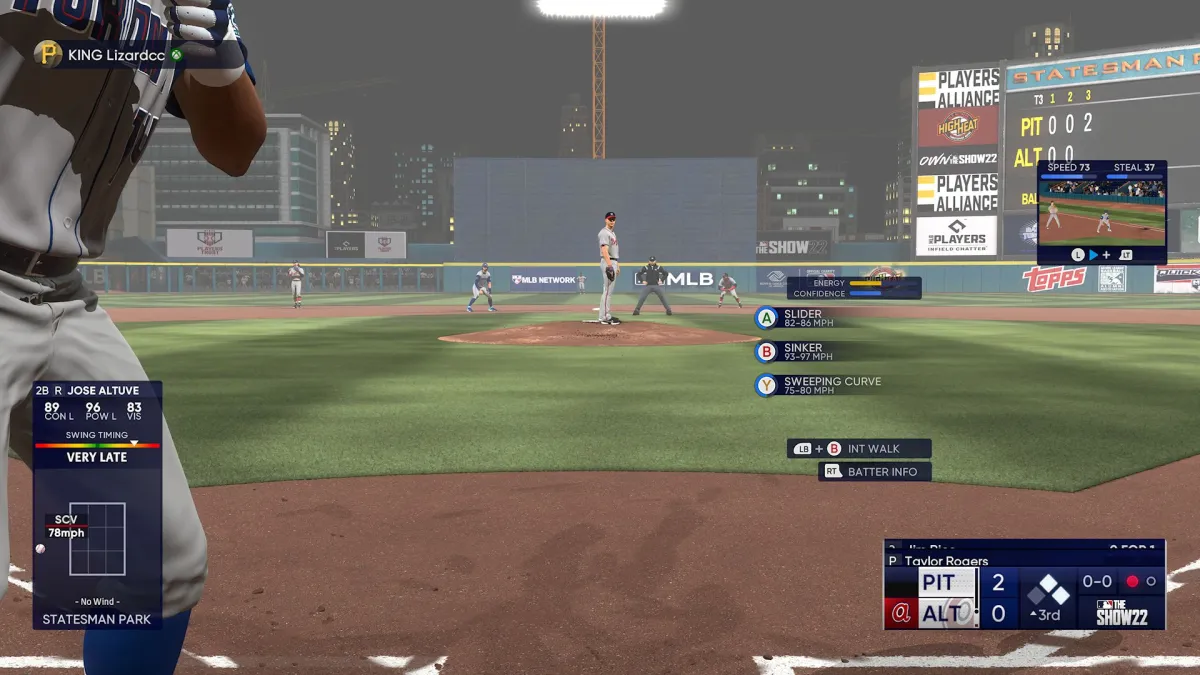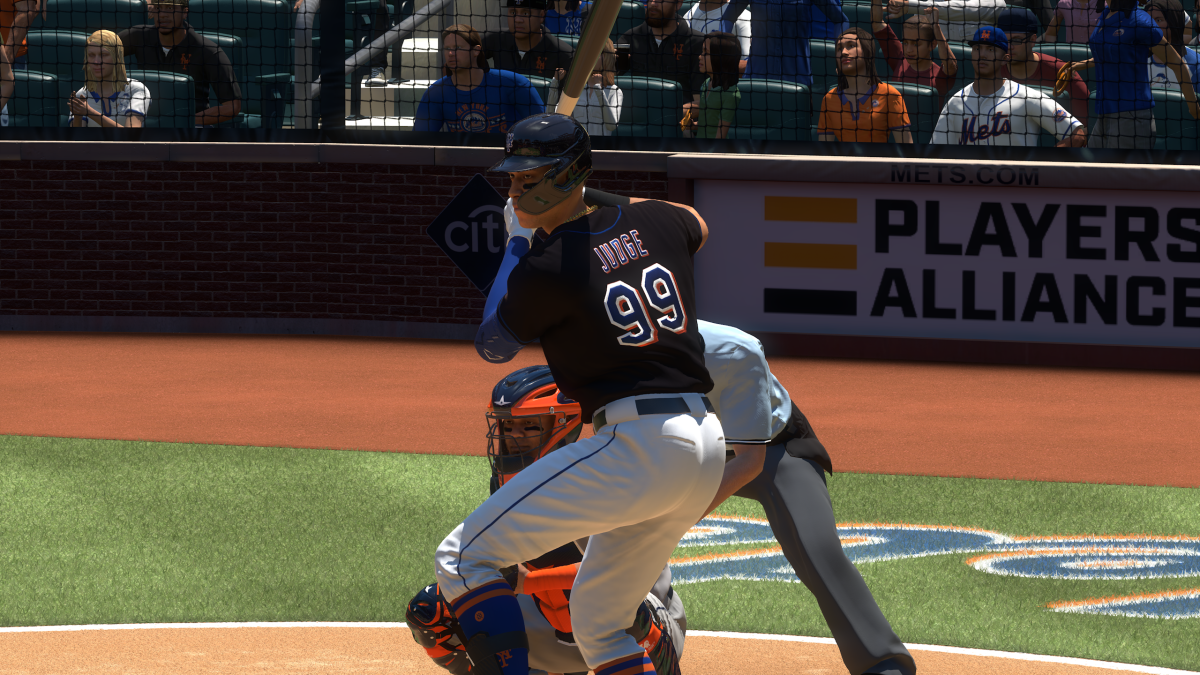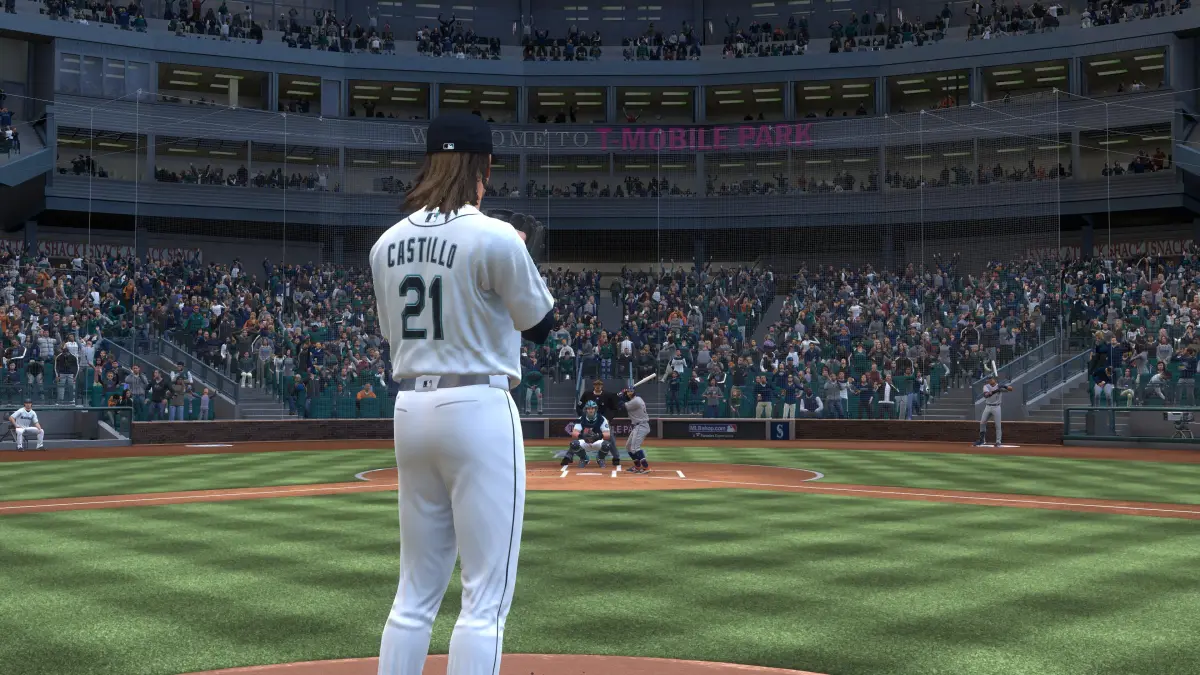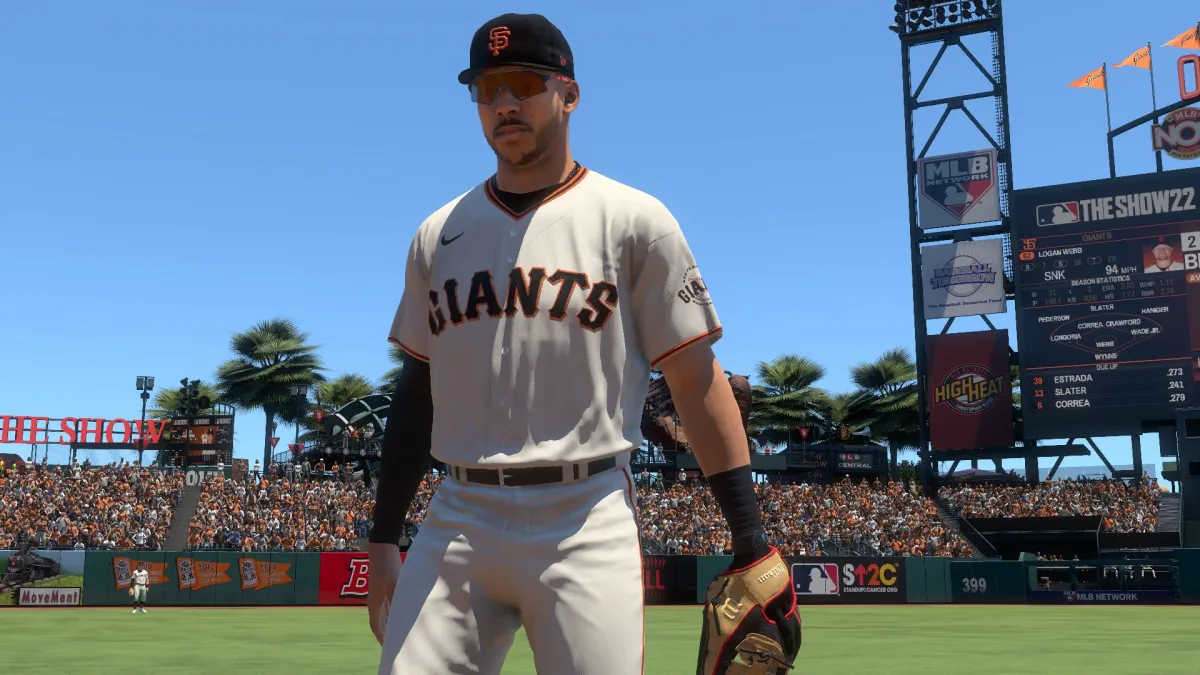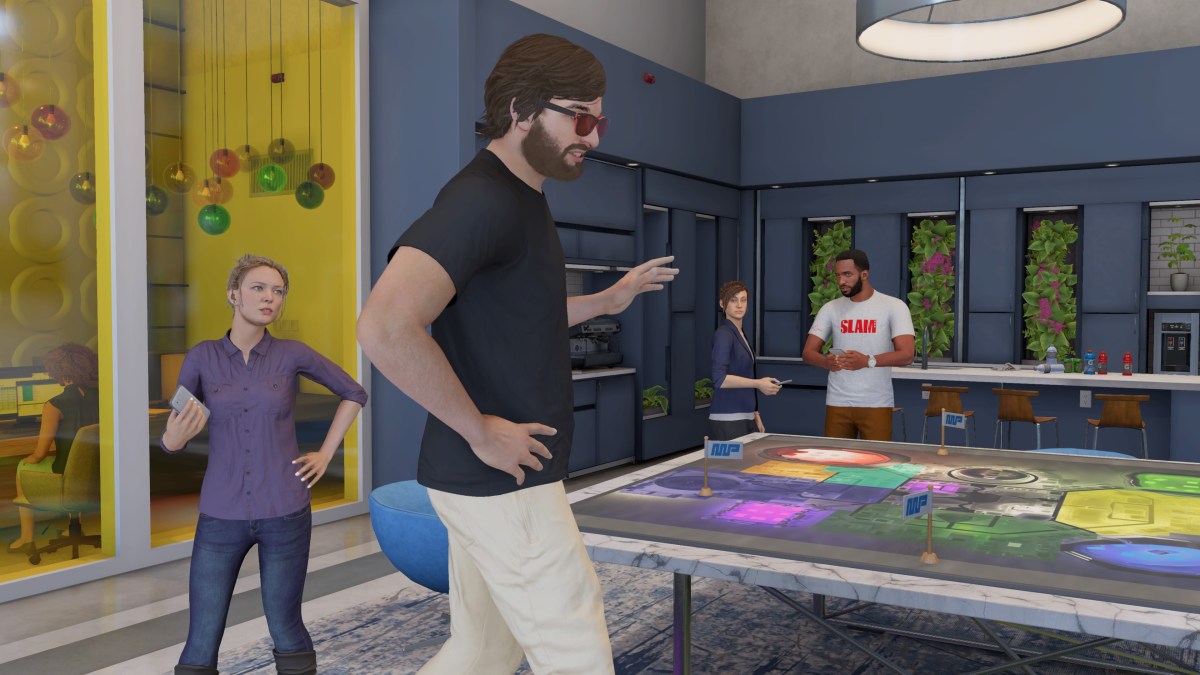Every year, MLB The Show tries to take a step forward in one gameplay area or another. With more animations and potential outcomes every time the bat connects with the ball, it can be easy to miss all of the small but meaningful changes that you see during any given game if you’re someone who plays the new edition every year. It’s kind of in the same vein as how you don’t really see yourself slowly aging on a day-to-day basis because you look at yourself so regularly that any new wrinkles and blemishes are almost imperceptible. Despite these advancements, there’s always more to improve. This is why I’ve put together a list of the five worst gameplay issues plaguing MLB The Show 22 right now.
Some of these, like the game’s hitting engine that determines how user input will affect where the ball will go, are more glaring and obvious simply because of how consequential they are to every pitch. But there are also a few smaller and more trivial components of the game — some that are even specific to certain modes — that can create moments of disbelief by having events occur that fly in the face of all of that realism you see elsewhere.
Let’s dig into my list.
Five Worst Gameplay Issues In MLB The Show 22
Hitting
The challenge with developing a hitting engine that accurately recreates the battle between pitcher and batter has always been trying to balance rewarding optimal user input while also allowing for some unpredictability. It’s obviously paramount that barreling up the ball with your PCI placement (when using zone hitting) and receiving perfect-perfect feedback on contact should routinely yield hits and home runs, but you also want the game to be able to account for things like line drives right at fielders and weak bloopers that land for hits. To complicate matters even more, there’s the fact that not all hitters (or pitchers, for that matter) are created equal, so getting good wood on the ball with one player shouldn’t lead to the same results as another who doesn’t typically swing a bat as well. If you consider all of the factors that have to be included in whatever equations are being run under the hood on every single pitch, you can start to appreciate how tricky this vital element of baseball is to satisfyingly bring to life.
That being said, hitting in MLB The Show 22 has been off to a bit of rocky start since the release of the game, especially within online modes. This is precisely because it hasn’t balanced the aforementioned outcomes enough to ensure that the user who performs the best at the plate with their PCI placement throughout a game will come out on top. Instead, it’s entirely possible to lose because too many of your perfect-perfect lasers find their way into someone’s glove while your opponent’s loopers off the end of the bat somehow find a way to fall in front of an outfielder. These should really be rarer occurrences than they are now, particularly when playing online games in a competitive setting.
On top of that, the amount of foul balls is still too high, and that ties together with being able to barrel balls way too far out of the strike zone and keep at bats alive when you should simply strike out due to having a bad eye at the plate. It’s possible that a forthcoming patch could help to tune the hitting engine and get it to a point where the better player at the dish almost always comes out on top. But if not, it could be a long and frustrating year for anyone who frequents online modes.
Stealing
Stealing a base in MLB The Show hasn’t changed all that much in recent years, and it’s probably fair to say that the series has never really come up with the ideal mechanic to properly represent this aspect of the sport. It’s a bigger problem in any single-player modes where the CPU seems all too aware of when you have pressed the button to call for a steal and often will respond with either a pick-off attempt or a pitch out (despite the commentators always pointing out how rare pitch outs are in modern baseball). Online modes pose a different but similarly daunting challenge thanks to halfway decent players being able to time the catcher meter on throws perfectly every time and zip an absolute dime to gun out even the fleetest of foot.
There would appear to be an underlying flaw all the way down at the ratings level where the steal and speed ratings for some players have been set low enough to prevent them from ever thinking about trying to swipe an extra base. For instance, Vladimir Guerrero Jr. is obviously not going to win many races among MLB players, but he still managed to steal four bases last year and was only caught stealing once. Somehow this merits him receiving a zero(!) steal rating in MLB The Show 22, meaning he would probably be thrown out 99 times out of 100 if trying to steal second base against the vigilant and borderline psychic CPU pitchers.
Perhaps the way forward is overhauling the stealing mechanic entirely to introduce a new one that’s a little more skill-based and fun as its own mini-game. The cat-and-mouse interplay between pitcher and baserunner has plenty of nuance and there are ways this can be translated to the game whenever a runner is on base. It might be interesting to explore having an on-screen indicator flash when a runner picks up that a pitcher is delivering the ball to the plate. If a player is better at stealing or should the pitcher not vary how quickly he comes to the plate, the indicator would then flash earlier. The challenge would be to try to time a push of the steal button to be as soon after the indicator as possible to get a good jump.
Fielding
Not to make it sound like I am some kind of high-level MLB The Show 22 player or anything, but the fielding in the game is still too easy for my preferences and doesn’t offer enough in the way of customization to produce a realistic number of errors. It’s especially evident when it comes to throwing the ball because it doesn’t take long to master the meter and nail perfect throws with ease. Without a specific difficulty level to adjust when it comes to fielding, there’s no way to make using that meter more challenging by having it move faster or have a smaller window for success.
Last year, there was an option to at least alter the throwing so that the results would be based entirely on the ratings of the player involved, but unless I’m missing it somehow, that appears to no longer be in the game. The best option now then is probably to turn off the meter entirely and make the timing slightly harder to execute that way.
Injuries
It’s not like anyone wants injuries to occur, even when they’re only happening in a video game, but it’s part of the sport to see players land on the injured list from time to time when you’re in franchise mode. Even though you’ll see guys go down in MLB The Show 22 — and you can even control the frequency of how often injuries will happen using a slider — the way that these play out during a game sometimes doesn’t make a whole lot of sense. For example, I’ve had hitters forced to come out of a game after taking a swing at the plate only to quickly be diagnosed with a concussion. That must have been one heck of a hack at the ball to end up giving yourself a concussion in the process. Another time I watched one of my hitters get plunked with a fastball in the shoulder and then had to take the rest of the night off. The injury? A bum wrist.
Injuries can be strange and can pop up in the midst of some of the most common baseball activities, such as sliding into a base or sprinting to chase down a foul ball, but it would be nice if they were more in line with what the player was doing. If a player is running around the bases, let’s see him feel a tweak in a hamstring and have to sit out a few games. Or if he’s swinging a bat, make him experience an oblique issue that bothers him for a week or two. Most of all, when they get hit on a specific body part with a pitch, the game should be able to identify where they were struck and have that be where the pain is felt.
Predetermined Outcomes
There’s a weird phenomenon on certain plays in MLB The Show 22 that’s been around for years now where on balls that are hit narrowly foul, both the hitter and fielders will react as if they already know the ball is going to land in foul ground. In real life, you would see batters running out these loopers down the line in case they land fair just as you’re bound to see fielders at least jog over for a look until they can be sure the ball will land in foul ground.
In MLB The Show 22, everyone stands still and watches a ball land only a few feet foul because they already know at the moment the bat connects with ball whether it will be in play or not. These can be such close calls that it was only a matter of time before I finally got a play like the one in the clip above where a ball hits third base and is correctly ruled fair by the umpire and yet the batter stays in the box the entire time and doesn’t even bother running to first base where he’s eventually called out, all because his programming has told him from the outset that it’s foul.


